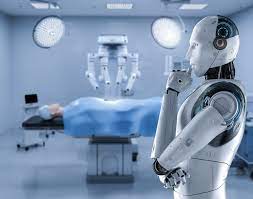The Evolution of Surgical Techniques
Robotic surgery has emerged as a transformative technology in the field of medicine, revolutionizing the way surgical procedures are performed. With advancements in robotics and computer-assisted technologies, surgeons can now achieve unprecedented levels of precision and accuracy in minimally invasive procedures.
Understanding Robotic Surgery
1. How Robotic Surgery Works
- Robotic surgery involves the use of robotic systems to assist surgeons in performing surgical procedures with enhanced precision and control. These systems typically consist of robotic arms equipped with surgical instruments, guided by a surgeon who operates from a console.
2. Benefits of Robotic Surgery
- Enhanced Precision: Robotic systems offer greater precision and dexterity than traditional surgical techniques, allowing surgeons to perform intricate tasks with improved accuracy.
- Minimally Invasive: Robotic surgery is often minimally invasive, resulting in smaller incisions, reduced trauma to surrounding tissues, and faster recovery times for patients.
- Improved Outcomes: Studies have shown that robotic-assisted procedures can lead to fewer complications, shorter hospital stays, and better clinical outcomes compared to traditional surgery.
Applications of Robotic Surgery
1. General Surgery
- Robotic surgery is used in various general surgical procedures, including hernia repair, gallbladder surgery, and colorectal surgery. The precise control offered by robotic systems enables surgeons to navigate complex anatomical structures with ease.
2. Urology
- In urological procedures such as prostatectomy and nephrectomy, robotic surgery has become the standard of care due to its ability to preserve nerve function, minimize blood loss, and shorten recovery times for patients.
3. Gynecology
- Robotic-assisted hysterectomy and myomectomy are commonly performed in gynecological surgery, offering patients less postoperative pain, reduced scarring, and faster return to normal activities compared to traditional open surgery.
Challenges and Future Directions
1. Cost and Accessibility
- Despite its advantages, the cost of robotic surgery remains a barrier to widespread adoption, limiting access to patients in certain healthcare settings. Efforts to reduce costs and improve accessibility are ongoing, with advancements in technology and training programs.
2. Continued Innovation
- The field of robotic surgery continues to evolve rapidly, with ongoing research and development focused on enhancing robotic systems, expanding surgical capabilities, and addressing challenges such as ergonomics and user interface design.
The Promise of Precision in Surgery
Robotic surgery represents a paradigm shift in surgical practice, offering unprecedented precision, improved patient outcomes, and enhanced safety for complex procedures. As technology continues to advance, the future of robotic surgery holds great promise for further innovation and optimization in surgical care.




